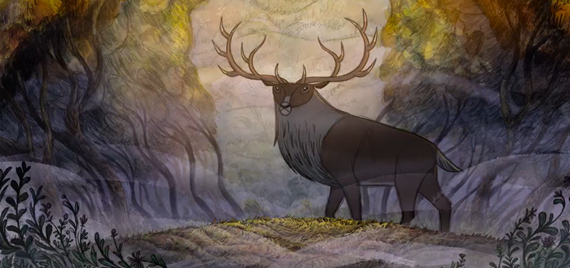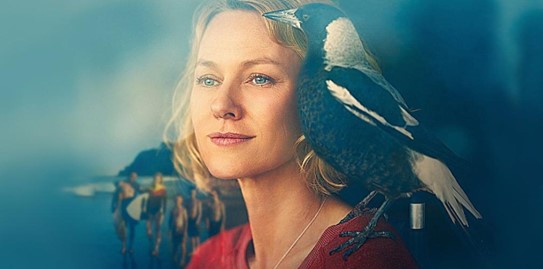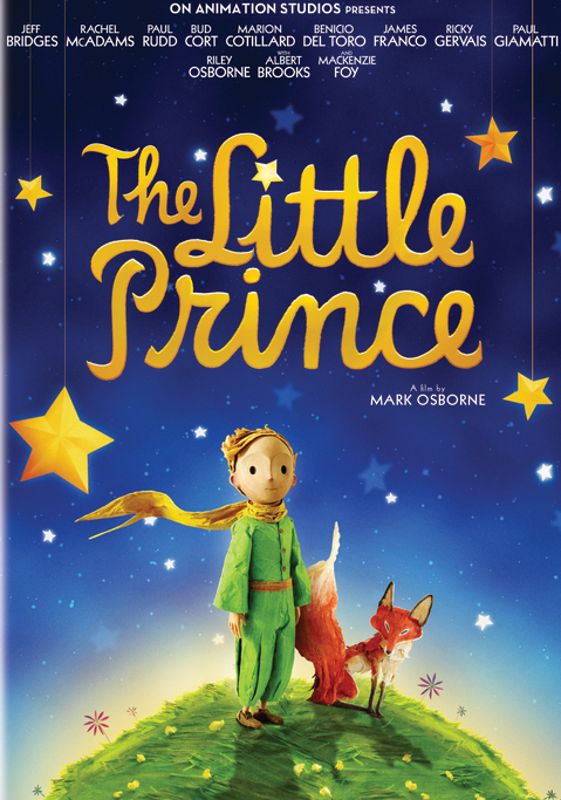Tag: HAR: Metamorphosis/Transformation
-
A Christmas Carol. Dir. Robert Zemeckis. Walt Disney Studios Motion Pictures. 2009.
‘Even the blind men’s dogs appeared to know him; and when they saw him coming on, would tug their owners into doorways and up courts; and then would wag their tails as though they said, “No eye at all is better than an evil eye, dark master!’ [1] Guide dogs have been a symbol of…
-

Wolfwalkers. Dir Tomm Moore and Ross Stewart. Apple TV+. 2020.
The woods are getting smaller every day. At the core of 2020’s Wolfwalkers is a fable about environmental degradation: the mounting destruction of the natural world, and the subjugation of those who live in tune with it. From its very beginning, the film seeks to examine and even disrupt the human/animal boundary in a unique…
-
2001: A Space Odyssey. Dir. Stanley Kubrick. Metro-Goldwyn Mayer. 1968.
As with the majority of Stanley Kubrick’s filmography (we’ll mutually agree to exclude Fear and Desire from this conversation), 2001: A Space Odyssey has been subjected to extensive film analysis and criticism. This article will explore the implications of the film’s perpetuation of sociologically-constructed human-animal boundaries in order to articulate the commonality of violence across…
-

Penguin Bloom. Dir. Glendyn Ivin. Netflix, Inc. 2021.
Inspired by true events, Penguin Bloom tells the story of Sam Bloom, a mother and wife who became paralysed after a serious accident. As she struggles through a difficult recovery, a small miracle occurs, a magpie called Penguin enters the Bloom family, changing the course of their lives forever. This scruffy looking creature builds an…
-
Batman Begins. Dir. Christopher Nolan. Warner Bros. 2005.
Why does Batman dress like a bat? In the words of Batman himself, “bats frighten me. It’s time my enemies shared my dread.” In Batman Begins, the boundaries between human and animal are psychologically breached through Bruce’s lifelong phobia of bats. This all-consuming dread leads to Bruce’s attempt to confront this fear through exposure therapy.…
-
Scooby-Doo on Zombie Island. Dir. Jim Stenstrum. Hanna-Barbera Cartoons. 1998.
Scooby-Doo on Zombie Island[1] is subversive both in terms of subverting what you’d expect from a typical Scooby outing (substituting criminals in masks with genuine monsters) and subverting ideas of what it truly means to be villainous. Immortal werecats Simone and Lena (fig. 1) sacrificed their souls to their cat god to exact revenge against…
-

The Little Prince. Dir. Mark Osborne. Paramount Pictures. 2015
The Little Prince uses the animated medium of a children’s film to reconfigure the representation of the snake. A ‘common trope’ also applied here, is to present snakes as a certain bringer of death. The image of a reptile being posed as ‘cold-hearted aggressor’ is familiar as it goes back to Adam and Eve –…
-
The Simpsons Movie. Dir. David Silverman. 20th Century Fox. 2007.
Why does everything I whip leave me? – Homer Simpson, The Simpsons Movie The Simpsons Movie is characterised by imprisonment vs agency – the central plot revolves around the incarceration of the town of Springfield using a giant glass dome as a punishment for environmental damage – therefore it seems only right to extend the…
-
The Good Dinosaur. Dir. Peter Sohn. Disney Pixar. 2015.
Ever wondered what life would be like if dinosaurs never became extinct? Well, you’ll never have to wonder again thanks to The Good Dinosaur. In this alternate world human-animal relationships are reversed as the dinosaurs are civilised and positioned above humans hierarchically. In doing so, this film evokes questions surrounding the ethics of human practices…
-
The Ant Bully. dir. John A. Davis. Warner Bros. Pictures. 2006.
The Ant Bully chronicles the adventure of Lucas Nickle, who demolishes an anthill one day in frustration over being bullied by the neighbourhood kids. In response, the ants shrink Lucas down and sentence him to live and work in the colony as one of their own, with the hope of creating “a brighter future for…